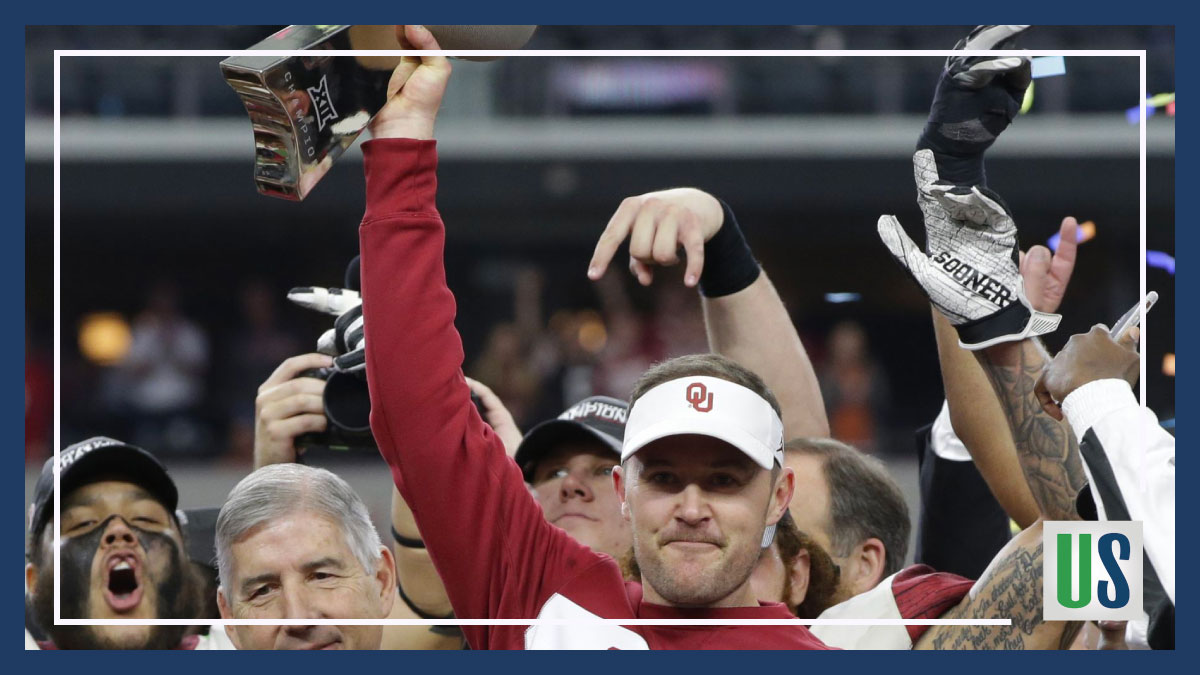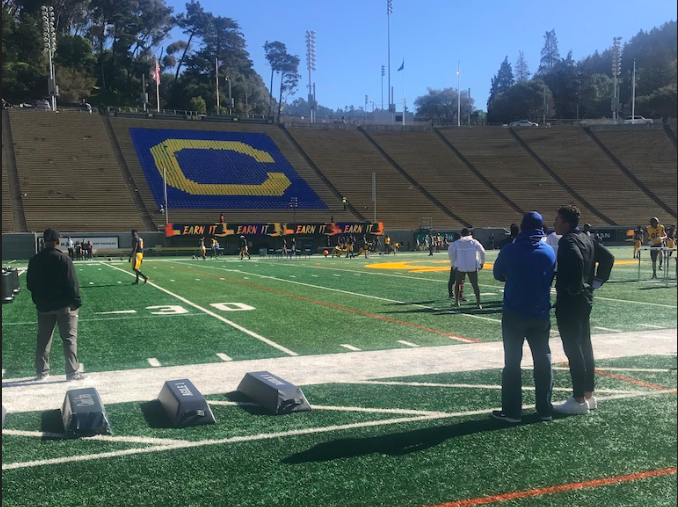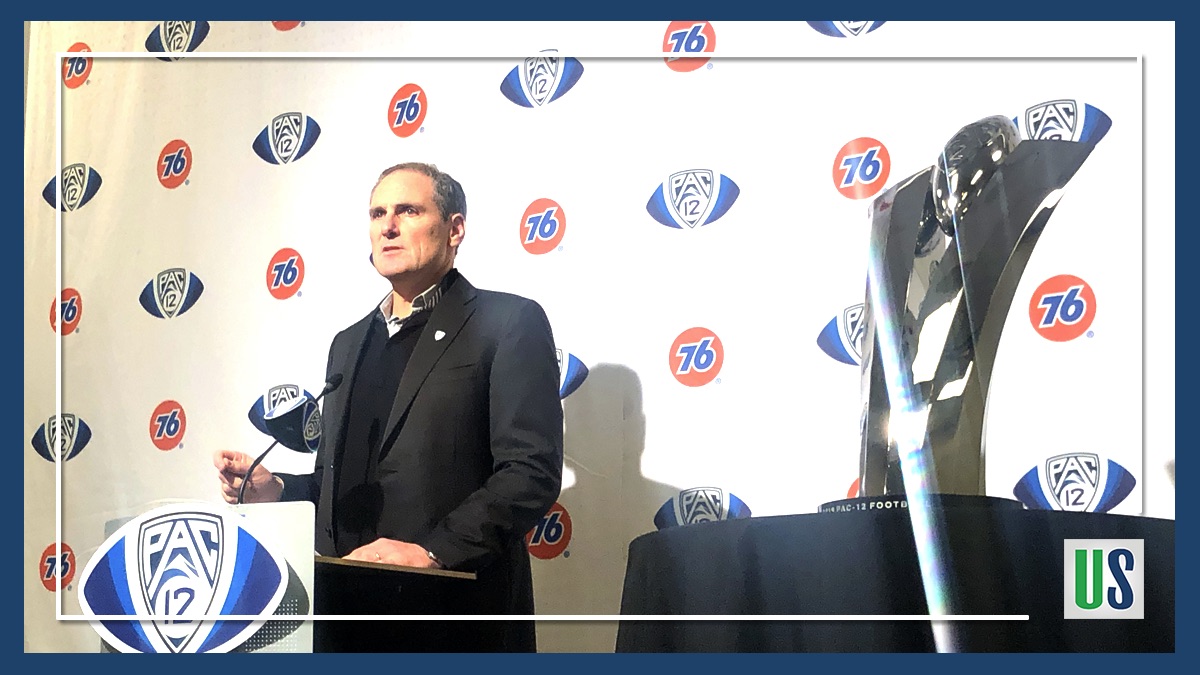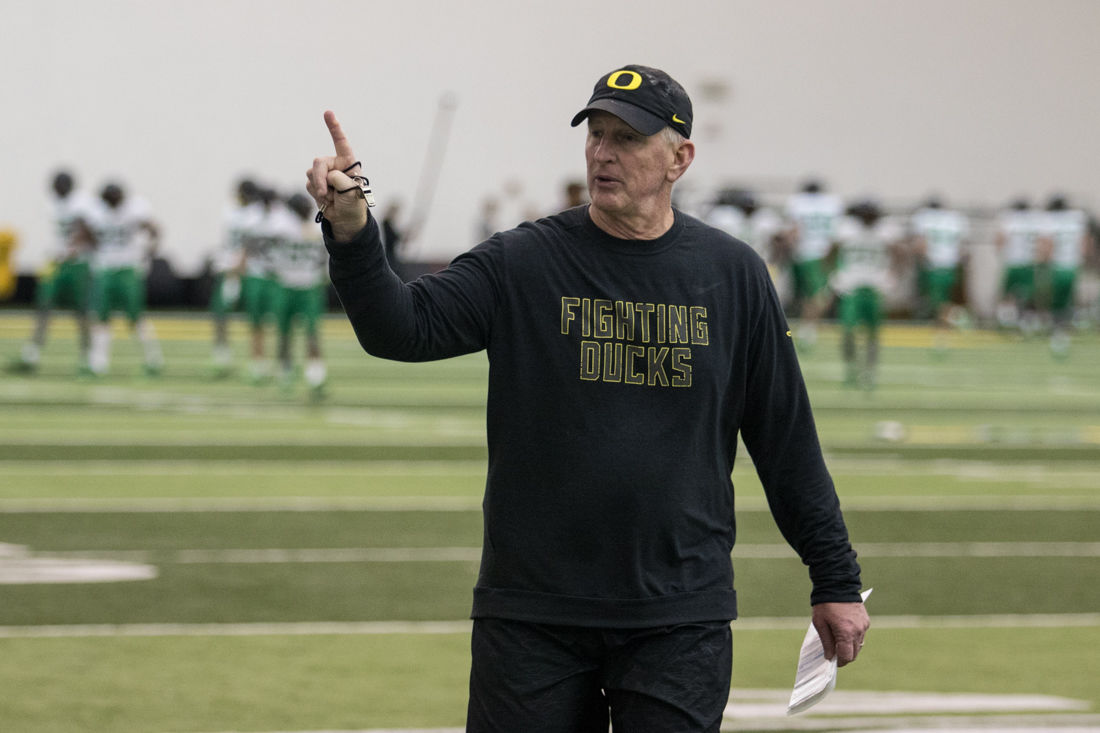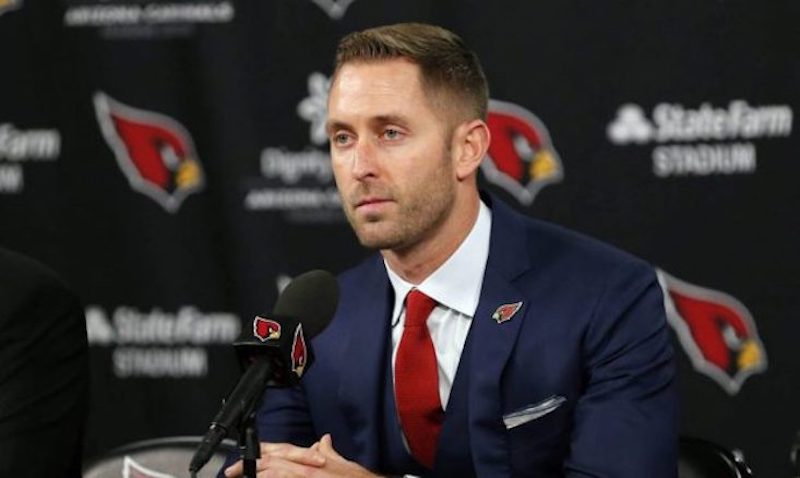As former Texas Tech head coach Kliff Kingsbury transitions into the NFL, his thought process shows just how far he’s matured since becoming college football’s youngest head coach.
When Kliff Kingsbury was hired as Texas Tech’s head coach in 2013, he was coming off an exciting year. Kingsbury, then 32, had just coached the youngest Heisman winner in the award’s history in Johnny Manziel. As offensive coordinator at Texas A&M, the national spotlight was focused on a coach with a penchant for details, who proved his high powered offense could be successful in the SEC; which was viewed as the gateway to the NFL.
Fast forward to Texas Tech’s loss vs. Baylor on November 24, 2018, where Kingsbury’s head coaching record hit 35-40 (.467).
In Tech’s 24-35 loss in Dallas, it was pretty much guaranteed that he would not be returning to Lubbock in 2019. Days later, Kingsbury’s termination was confirmed, but just as the news came in, Kliff Kingsbury’s name escalated to the top of every offensive coordinator vacancy position available. Just as Red Raiders began embracing “The King’s” new destination in Los Angeles as the Trojans’ OC, USC allowed him to interview for the Arizona Cardinals’ head coaching position. While the idea of a coach with a losing record seemed insane at first, the Cardinals’ decision was on-trend with the NFL’s sudden shift to the very offensive installation that Kliff Kingsbury had become notorious for throughout his entire playing and coaching career.
Record-breaking numbers and fast-paced offenses are becoming the identity of the Big 12. Now it’s also trickling into the SEC and specifically Alabama with quarterback Tua Tagovailoa. For years the Crimson Tide’s identity was in its defensive fortitude, but Tua’s arm strength and cerebral talents prove that to outmaneuver opponents means you have to outsmart them. This can be attributed to why Rams’ head coach Sean McVay has seen the success he has in Los Angeles. Just as defenses understand what “Halle Berry” means, quarterback Jared Goff catches them off guard with another audible. “Obama Obama. Ric Flair Ric Flair.” Score. It’s poetry.
It’s easy to understand why NFL purists who believe the offensive philosophies and avant-garde schemes in college should stay in their lane, but the NFL has to source talent from somewhere. And with two of the top producing conferences in college football transitioning, it’s the perfect timing for a Kliff Kingsbury-type coach.
Kingsbury might be young by NFL standards, but his playing resume spans from New Braunfels, Texas to Europe, so he’s cultured in a way that he understands his players. His coaching career started on a roll of the dice, and he’s been on a G6 ever since. Sure, there’s been turbulence, but like most successful people, adversity and struggles haven’t taken him off course. He’s learned from every role and opportunity he’s been given, and his work ethic combined with his detail-oriented mentality is why he’s now one of 32 NFL head football coaches.
But with the man responsible for coaching up six current NFL quarterbacks–including the frontrunner for the NFL’s MVP Award in Patrick Mahomes–suddenly in charge of a team worth $2.5B, questions have been raised, and rightfully so.
Thankfully, Kingsbury was kind enough to sit down with me to clear the air on some of those concerns.
Q: What was the most transformative event in your time as head coach at Texas Tech that let you know you were ready for this step?
KK: “I’m not sure you ever know that you’re ready, but having been fortunate to coach guys that have played at this level and seen the success they’ve had in similar offensive trends going on in the NFL, I’m just excited for this opportunity, and I’ll try to take what we’ve done at the college level into the NFL.”
Q: If you could break the internet with one unknown fact about you, what would it be?
KK: “I’m straight forward. What you see is what you get.”
Q: You’re one of the coolest and most composed guys on the sideline at every level. So, schematics aside, who influenced that aspect of your coaching philosophy?
KK: “I try to only show positive reactions. I think that when I was with New England watching Coach Belichick, he was the one where ‘great play or bad play’ [he was composed]. And I always thought that was good for the pulse of the team. You never really knew what he was thinking either way, but he never showed panic or any sort of overreaction, and I think that’s just a good mentality for a coach to show to his team.”
Q: Thoughts on angry coaches coming from a former players’ perspective?
KK: “Players respond differently. For me, I was just never a guy who fed off the coach losing it. I was more like, ‘Hey, let’s figure this out, keep our heads together,’ and come up with the best solution to whatever the issue was at the time.”
Q: You coached Pat [Mahomes] and were with him the night he was drafted, and you were drafted by the Pats and played with Tom Brady. How are you feeling about the AFC Championship game?
KK: “I’m pulling for both offenses, so… a high scoring affair. Hopefully, they tie! No… it’s tough because obviously, I have a lot of respect for the head coaches and the teams and Tom and Pat, so I just want them both to play really well, and I’m sure it will be a heckuva a game.”
Q: So you have no rooting interest?
KK: “I don’t. I’m just trying to stay neutral and hope everyone plays well and stays healthy.”
Q: What was the biggest challenge in your first few years as head coach at Texas Tech? Did you face any issues or setbacks that might have throttled Tech’s progression, and ultimately your win-loss record?
KK: “I’m sure there were specifics, but just as a young coach, I think I was probably a little too ambitious on some things. Instead of just really trying to build it from the ground up, I thought we could make some quick fixes here and there. It probably set us back, and I think it’s just something that you learn as you go. There isn’t anything that can prepare you for that, but I think that probably pushed us back a little bit in the beginning.”
Q: Did you think your limited time in the coaching profession had an impact on your coaching tree?
KK: “No…I’m not sure. Obviously, I hadn’t been a coach for very long when I was given that opportunity and probably had some limited connections as opposed to others. I think that’s something that moving forward, I’ve really tried to be thorough in the hiring process, and making sure that we’re always getting the best candidates possible. I’ve been fortunate to coach with a bunch of coaches who have done a tremendous job for us, but that’s one of the biggest things I took from [that job]; you have to get the right tools for that program at that time, regardless of your relationship with people. It’s just about getting the right people.”
Q: What’s your favorite quote?
KK: “Go confidently in the direction of your dreams, and live the life you’ve imagined.” — Henry David Thoreau
Q: You haven’t announced an OC yet, but noted that whoever you hire will help you mesh some traditional looks into your system. With how much the NFL is changing offensively, is it important to bring in traditional coaches to transition veteran players into new schemes more efficiently?
KK: “The experience factor in this league is [what’s] important for me, to be able to learn from everyone that has been here before and dealt with an NFL schedule, game planning, and break downs. There are just different aspects that will be new to me, so the more experience you can rely on, the more ideas you can get from people who have done it at a high level from different organizations, the better off we’ll be.”
Kliff Kingsbury is an anomaly–especially to the coaching world. He’s a charismatic guy with Texas swagger but places a great deal of emphasis on intelligence. From his custom suits to one of his favorite books, The Alchemist by Paulo Coelho, the details he pays attention to are a nod to old school elements of the game; it’s his system that provides an upgrade. And with another NFL team getting on board, it shouldn’t surprise anyone if the ‘Year in Football’ in 2019 includes an increase of “system experimentation.”
Want More? Check Out: Preseason Polls are Worthless and Mess Up the College Football Playoff

